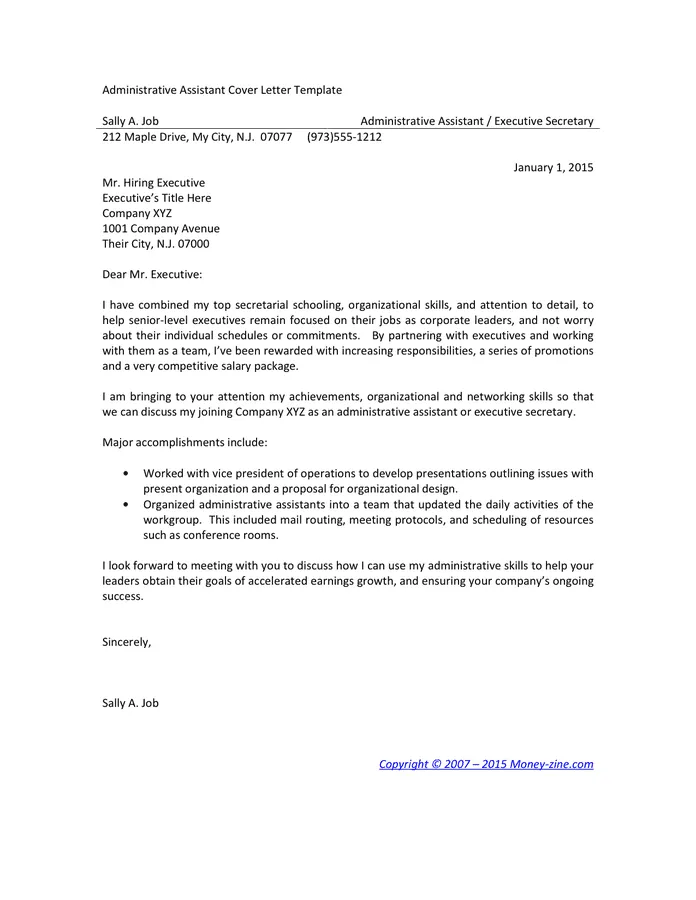What is an Administrative Assistant Cover Letter?
An Administrative Assistant cover letter is a formal document accompanying your resume when applying for administrative assistant positions. Its purpose is to introduce yourself to the hiring manager, highlight your most relevant skills and experience, and express your interest in the specific role and company. Unlike your resume, which provides a factual overview of your qualifications, the cover letter allows you to showcase your personality, writing skills, and enthusiasm. It’s an opportunity to elaborate on your accomplishments, explain how your skills align with the job requirements, and demonstrate your understanding of the company’s needs. A well-crafted cover letter can significantly increase your chances of getting an interview.
Key Components of a Cover Letter
A strong cover letter is composed of several key sections, each playing a vital role in effectively presenting you as a candidate. Understanding these components will help you structure your letter logically and persuasively. Each section should serve a specific purpose, contributing to the overall goal of securing an interview. The following sections are crucial for a compelling cover letter.
Header Section
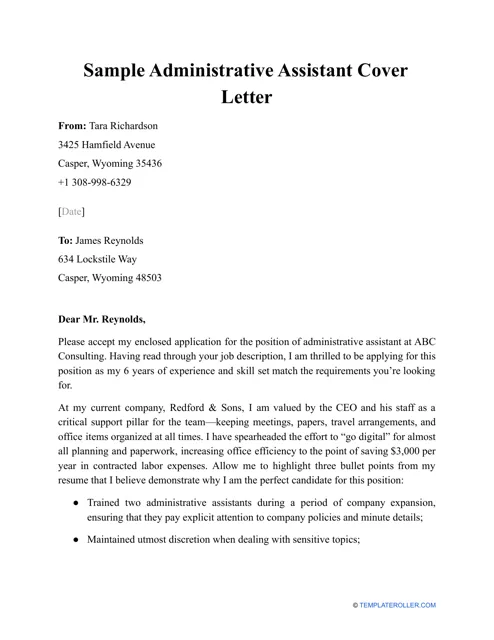
The header of your cover letter sets the tone and provides essential contact information. It should be clear, professional, and easy to read. Ensuring accuracy is critical to prevent any potential communication issues. An organized and accurate header conveys professionalism and attention to detail, important qualities for an administrative assistant.
Your Contact Information
Include your full name, phone number, email address, and optionally, your LinkedIn profile URL. Make sure your contact information is up-to-date and professional. Double-check for any typos, as a single mistake can prevent the hiring manager from reaching you. Use a professional email address; avoid informal usernames.
Date
Place the current date below your contact information. This helps the hiring manager understand when you applied for the position and ensures your application is considered timely. Standard date formats like ‘Month Day, Year’ are generally preferred.
Employer’s Contact Information
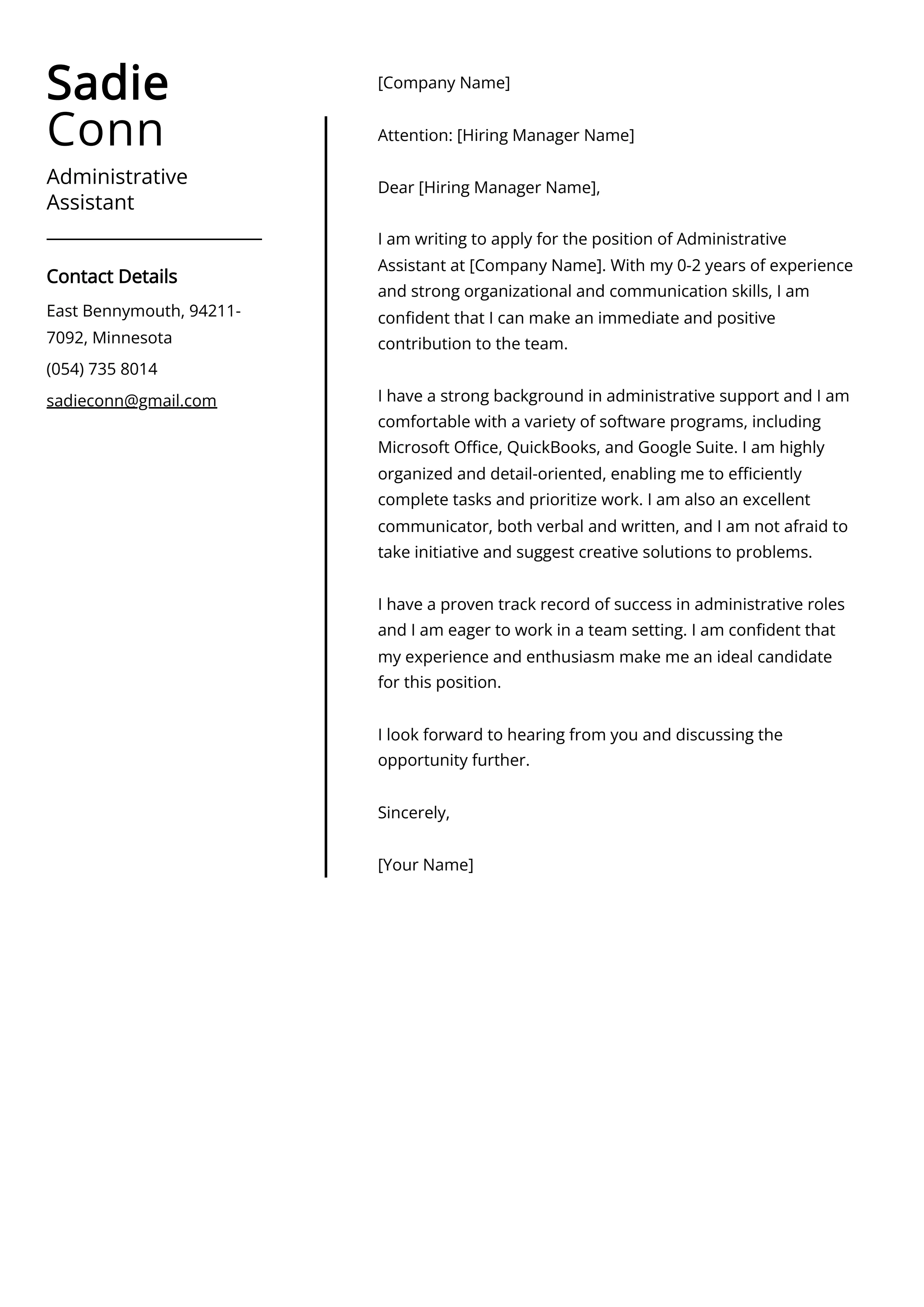
Include the hiring manager’s name and title, the company’s name, and the company’s address. If you do not know the hiring manager’s name, research on LinkedIn or the company website. Addressing the cover letter to a specific person shows you have taken the time to research the company and understand the role, which is always a positive sign.
Salutation
Start your cover letter with a professional salutation. ‘Dear Mr./Ms./Mx. [Last Name]’ is a standard and respectful approach. If you are unsure of the hiring manager’s name, use a general greeting like ‘Dear Hiring Manager’ or ‘Dear [Company Name] Team’. Avoid overly casual greetings.
Body Section
The body of your cover letter is where you make your case. It’s the core of the letter, and each paragraph should contribute to your overall goal. This section should demonstrate how your skills and experience align with the job requirements and how you can contribute to the company’s success. Structure your body paragraphs logically and persuasively to engage the reader and increase the impact of your application.
First Paragraph — Introduction
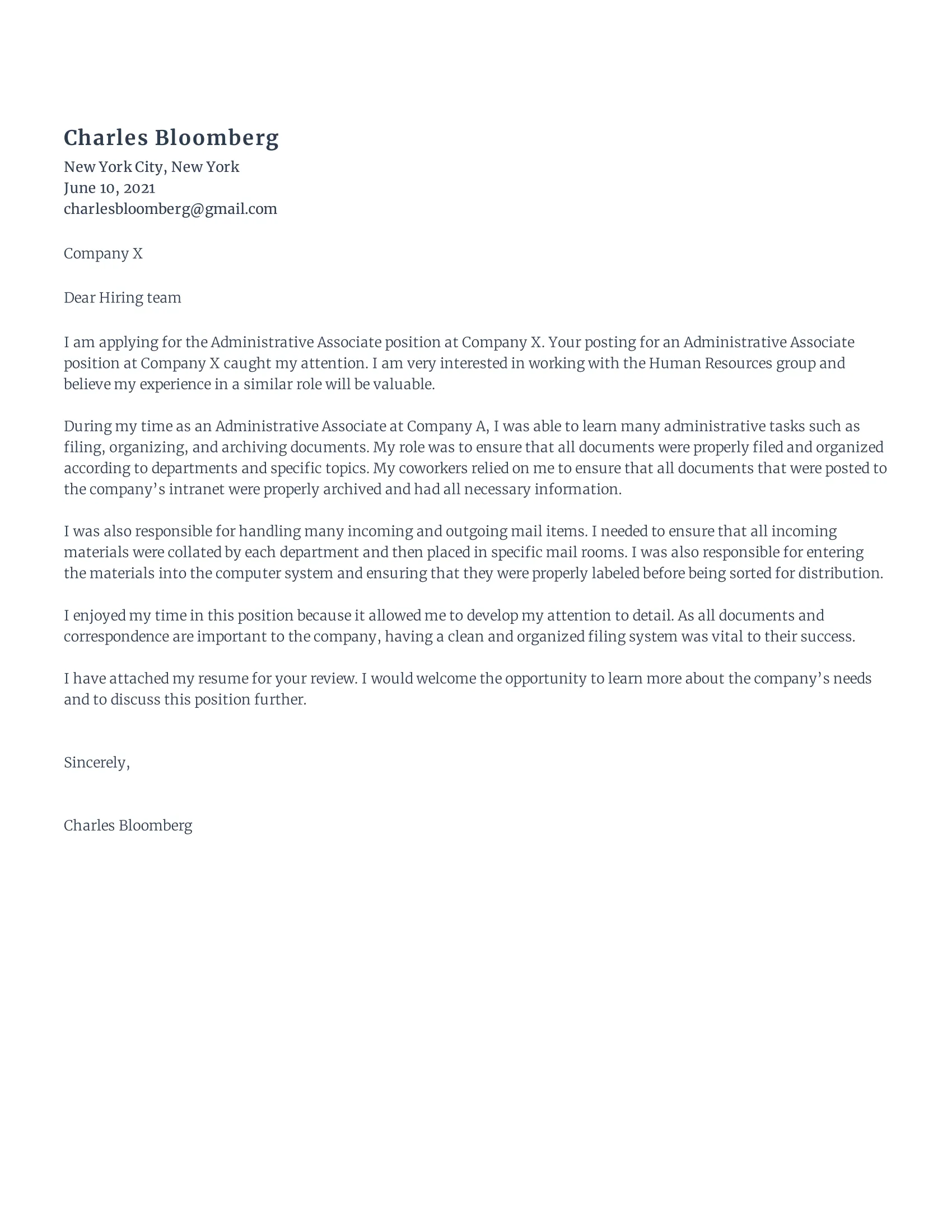
Start with a strong introduction that grabs the hiring manager’s attention. State the position you are applying for, where you saw the job posting, and a brief statement about why you are interested. Highlight something specific that attracted you to the role or the company. This section should be concise and immediately communicate your purpose. Demonstrate enthusiasm and a clear understanding of the opportunity.
Second Paragraph — Skills and Experience
This is where you highlight your skills and experience. Focus on the most relevant qualifications listed in the job description. Provide specific examples of your accomplishments and how you have used your skills to achieve positive outcomes. Quantify your achievements whenever possible to demonstrate your impact. This paragraph should clearly show how your background makes you a great fit for the role.
Highlight Relevant Skills
Emphasize the skills mentioned in the job description. These might include organizational skills, communication skills, proficiency in specific software, or experience with office management. Use keywords from the job posting to show that you understand the requirements. Avoid generic statements; provide specific examples of how you have applied these skills in previous roles.
Quantify Your Achievements
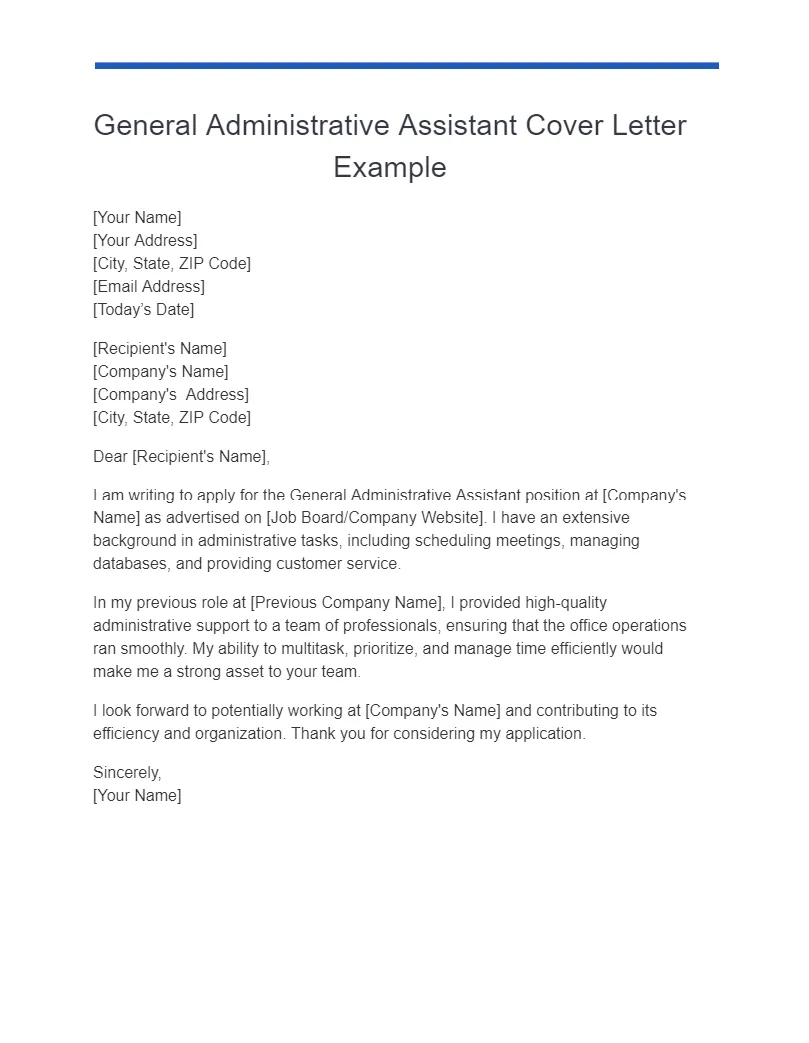
Use numbers and data to illustrate your accomplishments. For example, ‘Managed a calendar for 10 executives,’ ‘Improved office efficiency by 15%,’ or ‘Handled over 50 client inquiries daily.’ Quantifiable results are more impactful than general descriptions of your skills. Numbers add credibility and demonstrate your ability to deliver results.
Third Paragraph — Why This Company?
Show that you have researched the company and understand its mission, values, and culture. Explain why you are interested in working for this specific organization. Relate your personal career goals to the company’s objectives. Demonstrate that you see yourself as a good fit and have a genuine interest in contributing to their success. This shows you are invested and not just applying for any job.
Showcase Your Enthusiasm
Express your enthusiasm for the role and the company. Use positive language and demonstrate a clear understanding of the job’s responsibilities. Explain why you are excited about the opportunity to contribute your skills and experience. Your enthusiasm can make a significant difference in leaving a lasting positive impression on the hiring manager.
Closing Paragraph — Call to Action
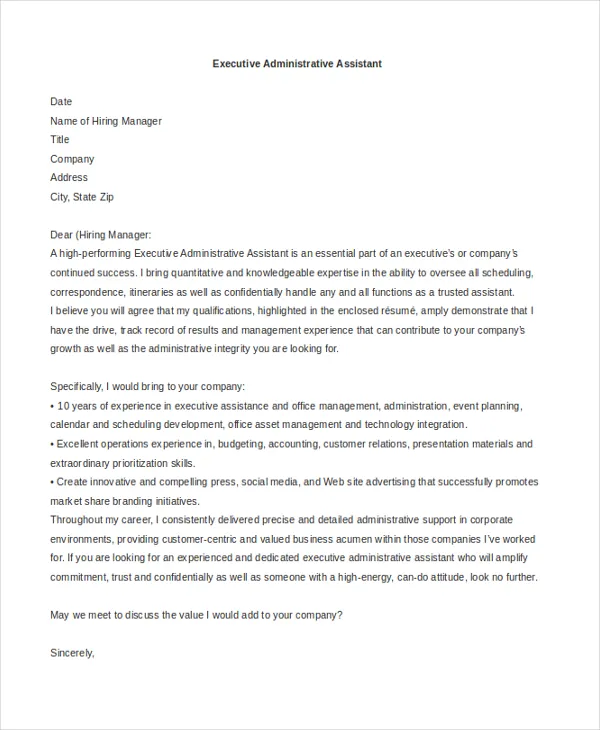
End your cover letter with a clear call to action. Reiterate your interest in the position and express your eagerness to discuss your qualifications further in an interview. Thank the hiring manager for their time and consideration. A strong closing paragraph leaves the reader with a sense of your confidence and professionalism.
Complimentary Close
Use a professional closing such as ‘Sincerely,’ ‘Best regards,’ or ‘Thank you.’ This adds a final touch of professionalism to your letter. The choice of closing should reflect your overall tone. Make sure to leave a space for your signature above your typed name.
Signature
If submitting a digital copy, type your full name. If you are printing the cover letter, sign your name above your typed name to add a personal touch. Your signature demonstrates that you have personally reviewed and approved the document, reinforcing your commitment to the application.
Formatting Your Cover Letter
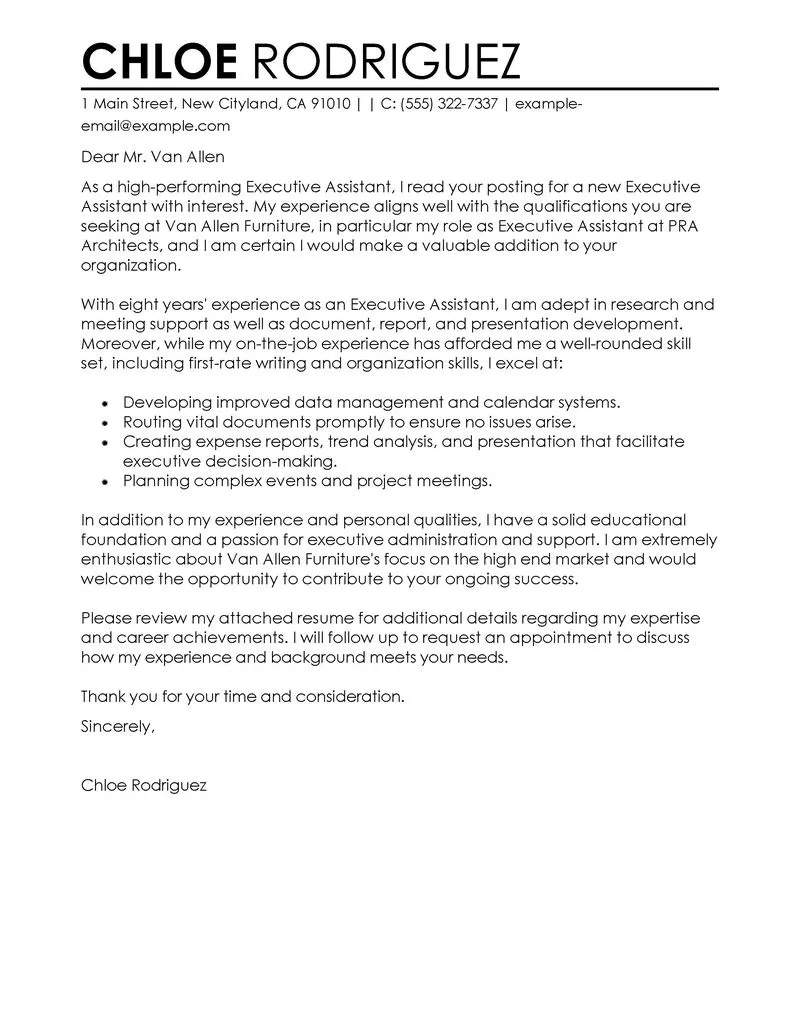
The way your cover letter looks can be just as important as what it says. Proper formatting makes your letter easy to read and projects a professional image. Pay attention to the following elements to ensure your cover letter looks polished and professional. A well-formatted letter makes a positive first impression, and reflects your attention to detail.
Font and Font Size
Choose a professional and easy-to-read font such as Times New Roman, Arial, or Calibri. Use a font size between 10 and 12 points. Consistency is key; use the same font and size throughout the document. This ensures that your cover letter is visually appealing and easy to navigate, making it more pleasant to read.
Margins and Spacing
Set your margins to 1 inch on all sides. Use single-spacing within paragraphs and double-spacing between paragraphs. This helps to create a clean and uncluttered appearance. Properly spaced text makes it easier for the hiring manager to read and absorb your information. Ensure there is ample white space to enhance readability and make your letter visually appealing.
Proofreading
Thoroughly proofread your cover letter for any errors in grammar, spelling, and punctuation. Errors can reflect negatively on your attention to detail and professionalism. Proofread multiple times and, if possible, have someone else review your letter. Correcting typos and grammatical errors is essential for creating a positive and professional impression. Pay close attention to detail and ensure every sentence is clear and concise.
Common Mistakes to Avoid
Avoiding common mistakes can significantly improve your cover letter. Errors can undermine your application and reduce your chances of getting an interview. Be aware of these pitfalls and ensure your cover letter is polished and professional. Making these adjustments will show you are a careful, considerate applicant. Focusing on these areas can make a substantial difference in your application.
Typos and Grammatical Errors
Typos and grammatical errors can undermine your credibility and make you appear unprofessional. Always proofread your cover letter carefully, multiple times. Use spell-check, but also read it aloud to catch errors. Consider having a friend or colleague review your letter. Such errors can make the hiring manager doubt your attention to detail and professional capabilities.
Generic Cover Letters
Avoid using a generic cover letter. Tailor each cover letter to the specific job and company you are applying for. A generic cover letter does not demonstrate that you have researched the company or that you are genuinely interested in the role. Customizing your cover letter is essential to show your commitment and make a stronger impression. Customize the letter to the company’s requirements, culture, and the specific role.
Focusing on Yourself Instead of the Employer’s Needs
While you should highlight your skills and experience, focus on how you can meet the employer’s needs. Explain how your skills and experiences can benefit the company. Emphasize what you can do for them, not just what they can do for you. Shifting the focus will make your application more compelling, and more effective at winning interviews.
Tailoring Your Cover Letter
Tailoring your cover letter to each job application is crucial for making a strong impression. Demonstrating your attention to detail and your understanding of the specific requirements can significantly increase your chances of success. Take the time to research the company and match your skills to their needs. Tailoring makes your application more targeted and effective.
Research the Company
Before you start writing, research the company. Understand their mission, values, and recent projects. Visit their website, social media profiles, and any relevant industry publications. This research will help you tailor your letter to demonstrate your understanding of their needs and how you can contribute. Knowing the company shows you take the application process seriously.
Match Your Skills
Carefully review the job description and identify the key skills and qualifications the employer is seeking. Highlight how your skills and experience align with these requirements. Use keywords from the job description throughout your cover letter to demonstrate that you are a good match. Customize the letter to specifically showcase your skills and how they can address the company’s needs, maximizing its impact on the reader.
Administrative Assistant Cover Letter Examples
Reviewing examples of successful cover letters can give you a better understanding of how to structure your own. Consider these examples as guides, and tailor them to your unique situation. They can provide valuable insights into effective language and content. These examples will help illustrate different approaches, including those for varying experience levels and specific roles.
Entry-Level Administrative Assistant Cover Letter
For entry-level positions, focus on transferable skills and any relevant experience, even if it’s from internships, volunteer work, or academic projects. Highlight your eagerness to learn and your strong work ethic. Emphasize your organizational skills, attention to detail, and proficiency with office software. Demonstrate your willingness to take on new challenges and contribute to a team environment. Showcase your potential and show how you can make a strong impact.
Experienced Administrative Assistant Cover Letter
If you have years of experience, showcase your proven track record of success. Highlight your achievements, quantify your results, and emphasize your leadership and problem-solving abilities. Demonstrate how you have improved office efficiency, managed complex projects, and supported executive teams. Detail your expertise and how it can be transferred to this new role. Clearly express your ability to manage significant responsibilities, contributing to operational excellence.
Cover Letter for a Specific Administrative Assistant Role
Tailor your cover letter to the specific requirements of the role. If the job description emphasizes skills in a particular area, like scheduling, data entry, or customer service, highlight your experience in those areas. Use keywords from the job posting, and provide specific examples of how you have used those skills in previous roles. Customize the cover letter for the specific role. This demonstrates that you carefully considered the role’s specific needs, and are ready to take them on.
Final Tips for a Great Cover Letter
Creating a compelling cover letter takes time and effort, but it’s a worthwhile investment in your job search. By following these tips, you can increase your chances of landing an interview and securing your desired administrative assistant position. Review these final pointers for a cover letter that grabs the reader’s attention and highlights your qualifications. Applying them increases your chances of securing the interview.
Always proofread and edit your cover letter before submitting. Customize the letter to each job application, and highlight your most relevant skills and experience. Use a professional tone and format. Express enthusiasm for the role and the company, and follow up after submitting your application. Following these tips will make sure your application stands out.
